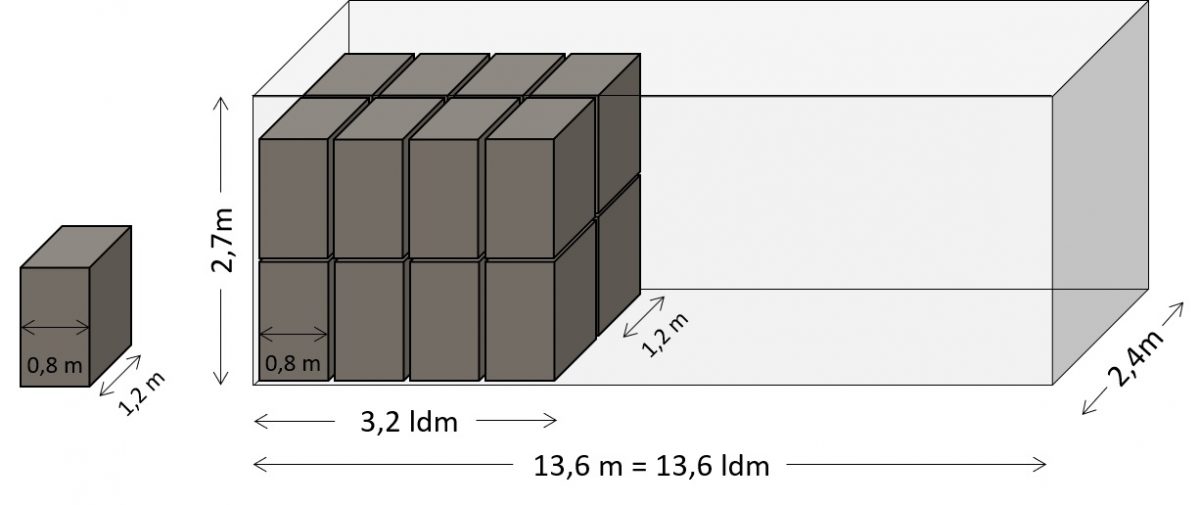One-way pricing is now always easy for trucking companies, especially when there are customer that have different needs to be met starting from roll containers up to kitchen appliances.
Hence, trucking companies still prefer to work with LDM and they most commonly do it manually.
So let’s find out on what a loading meter is and how it is being calculated.
Let’s take a read!
Loading Meter Definition
A loading meter is the standard unit of measurement for transport by truck, and are being used as a calculation unit for the goods that have to be transported but cannot be stacked.
In other words, a LDM is equal to one meter of loading space of the truck’s length.
If we take a look that the approximate width of a truck is 2.4 meters we can determine that one loading meter is approximately 2.4 m².
The loading meter conversion factors include:
- 1 loading meter often corresponds to 1850 kgs.
- 1 euro pallet = 0.4 loading meter
- 1 block pallet = 0.5 loading meter.
Thereupon, the LDM conversion factor can vary from carrier to carrier but as well it can vary from country to country.
General Size of Trucks in Europe
The general length for trucks in Europe is 13.6 metres.
In the general length category can be classified:
- Box trucks;
- Curtain truck
- Refrigerated trucks;
- Flatbed trucks;

On the other hand, the general height for trucks in Europe varies from 2.55 – 2.70 meter and the width is usually 2.45 meter.
Is There a Maximum Weight Per Loading Meter?
Different trucking companies have different conversion factors/rates, accordingly, those rates are being calculated based on the chargeable weight and in a large hand it depends on the final destination.
Yet, regardless of how trucking companies calculate their conversion rates, the weight should not exceed:
Size: 0.80 x 1.20 metres (0,4 loading metres)
Max. height: 2.20 metres
Weight: Trailer with 2 axles 18.0 t
- Trailer with 3 axles 24.0 t
- An articulated vehicle with 4 axles (2+2), with a distance between the axles of the semi-trailer of 1.30m to 1.80m 36.0t
How Do I Calculate a Load Meter?
The formula for calculating the load meters for a load carrier is as follows:
As previously mentioned, trucking companies can calculate their prices differently, but the general LDM is being calculated by the following formula:
- Load carrier length x load carrier width / 2.4 = load meter_ (e.g. for a Euro pallet: 1.2 m x 0.8 m / 2.4 m = 0.4 ldm)
- Length x width / 2.4 / stacking factor = loading meter (for example, for a Euro pallet: 1.2 m x 0.8 m / 2.4 m / 2 = 0.2 ldm)
- Length x width / 2.4 / stacking factor * number of load carriers = loading meter (e.g. for a Euro pallet: 1.2 m x 0.8 m / 2.4 m / 2 * 16 = 3.2 ldm)
Final Thoughts
As you had the chance to read, the loading meter is used by trucking companies as a unit for measuring the goods that have to be transported (more precisely the goods that cannot be stacked).
It turns out that this method of measuring the goods actually compensates the lost volume in the trailer.



